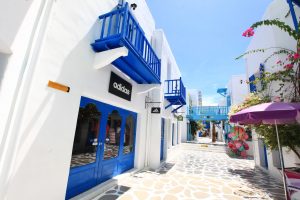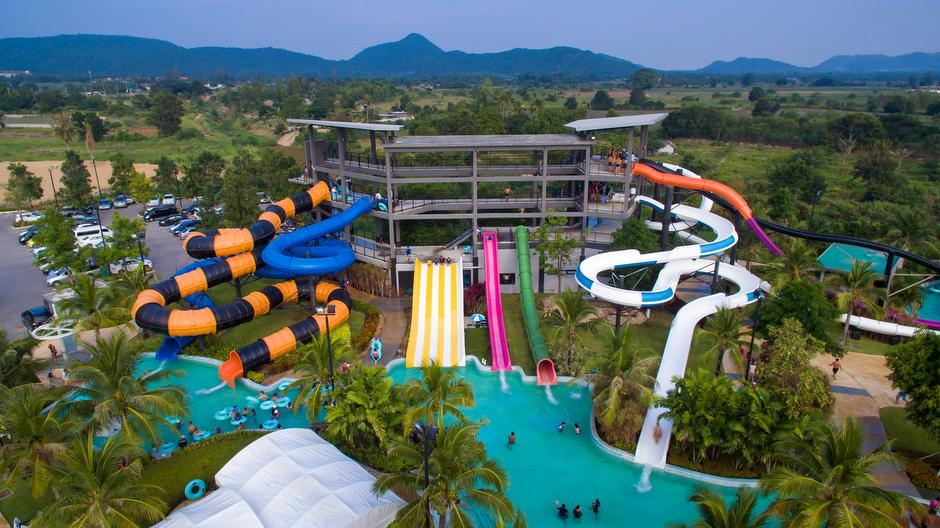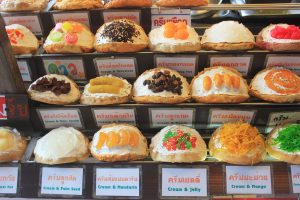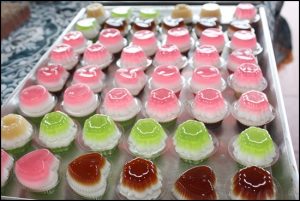Santorini Park brings a slice of the picture-perfect Greek island to Cha-Am. It’s got all the details right, from classic whitewashed buildings, colourfully painted windows, down to stone-paved paths and domed towers. An impressive lineup of shops, restaurants and an amusement park promise good times for everyone. This photogenic outdoor entertainment outlet occupies an expansive area just before the main highway reaches Cha-Am Beach. It’s quite an unusual sight, given the whitewash theme and architectural style that sets it apart from its surroundings. Cliff-top views of the ocean and a sweeping beachfront are the two missing elements that would otherwise make this place closer to the real thing.

Highlights at Santorini Park
The five zones at Santorini Park provide all-encompassing entertainment. Park Zone is essentially the amusement park part, with rides and games set on vast landscaped grounds. All rides are imported, including the 40-metre-high Ferris wheel, double-decker carousel, G-MAX reverse bungee, G-MAX giant swing, XD Dark Ride 7D interactive game and Asia’s first Wallholla climbing structure. Village Zone is all about the Greek island’s village architecture and its chilled-out coastal vibe. Wander down the maze of stone-paved lanes lined with two-storey whitewashed buildings and more than 140 shopping boutiques. Rest Area is where you will find a host of fast food outlets, cafés, personal care salons, a petrol station, convenience stores and more souvenir shops.



Santorini Park: Art and Culture Apart from shopping and entertainment, Santorini Park features an Activities Zone, a 3,000sqm outdoor space for hosting live concerts and performances. The Weekend Art Market features a flea-market style shopping experience. Find a wide selection of creative souvenirs and handicrafts to take home.
Santorini Park Cha-Am
Opening Hours: Mon – Fri 10:00 – 19:00, Sat – Sun 09:00 – 19:00

































